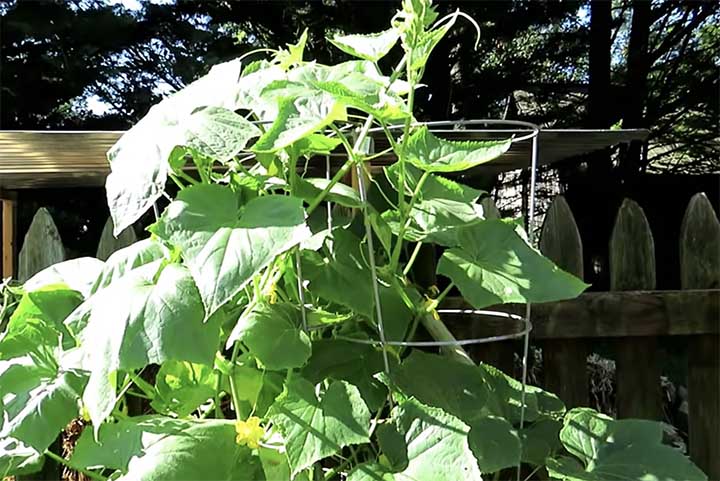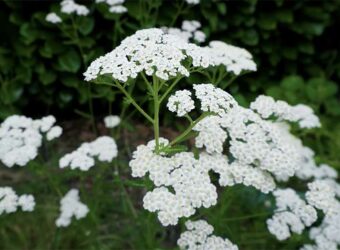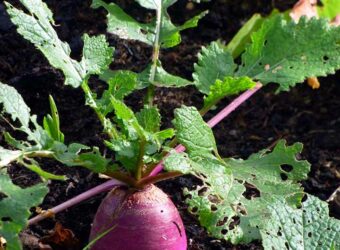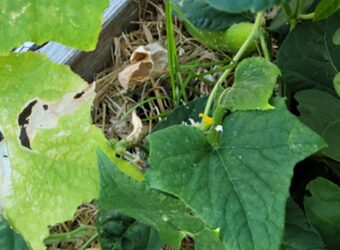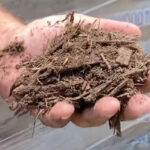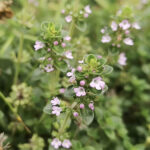Cucumber plants are very thirsty plants. Therefore, proper watering is crucial to getting lots of tasty cucumbers.
How Often Do I Water Cucumber Plants?
Cucumber plants growing in the ground should be watered once or twice a week. Cucumber plants in containers should be watered several times a week to keep the soil evenly moist. Seeds need to be watered every day until they germinate, then often enough to keep the soil evenly moist.
How Much Water Do Cucumbers Need?
Cucumbers in the ground need an inch a week until they start to bear fruit. At that point, they need two inches a week.
Cucumbers in containers will need more water because the soil in the container dries faster than the soil in the ground.
Seeds and seedlings need to be watered enough to keep the soil evenly moist. I can’t tell you exactly how much water to give cucumbers in containers, seeds, or seedlings because I do not know how big they are and how hot your climate is.
How Do You Know When to Water a Cucumber Plant?
You water a cucumber plant when the surface of the soil is dry. Do not wait until the cucumber plant wilts as this will reduce the number of cucumbers the plant has and can ruin any cucumbers on the vine.
Cucumbers become bitter when they get too dry. Buying an inexpensive moisture meter can help you keep the soil moist but not wet.
How Do I Water Cucumbers Properly?
Watering cucumbers properly is important to keep them hydrated and to keep diseases from infesting them. Here are some general rules.
- Never get the foliage or fruit wet when watering the cucumber plants.
- Always water in the morning.
- Mulch around transplanted seedlings and more mature plants to keep the soil temperature and moisture more even. Start by covering the soil with hardwood chips or straw and build up to a three-inch layer of mulch by the time the plants are one foot tall. Do not let the mulch touch the plant; place it around the vine to cover the soil.
- Subtract any rain from the recommended watering amounts that week.
In the Ground
The best way to water your cucumbers is to use drip irrigation or a soaker hose to apply water directly to the roots. Run your irrigation for twenty minutes, then wait twenty minutes. Do this three times. Watering this way gives the soil time to absorb the water you are giving it, so it doesn’t run off.
If you do not have irrigation, carefully pour water around the root without getting the foliage wet. Make sure you do not erode the soil around the roots. You should water once a week until the fruit starts growing, then switch to twice a week.
If you live in a hot climate, you may have to water twice a week before the fruit sets, and water every two days after the fruit has set. Your goal is soil that stays evenly moist, not soggy or too dry.
Outdoor Containers
Apply water to the soil without getting the foliage wet. Water until the water comes out of the drainage holes of the container. Wait fifteen minutes, then empty the water out of the saucer under the pot, if it has one.
Containers need to be watered when the surface of the soil is dry. This may be every day for small pots and in hot climates.
Indoor Containers
Water indoor containers by watering the soil without getting the foliage wet. Water as you would an outdoor container but set it in the sink to do so if possible, so the water doesn’t get on the floor.
The soil should stay evenly moist, so water when the surface feels dry. Depending on the size of the container and the temperature inside, this may be once a day or twice a week.
Watering Seeds
Seeds need to be watered every day so that they can stay moist. The soil should be watered enough to keep it moist without being soggy.
Too much water will rot the seeds before they germinate. Be careful to use a mist setting or a spray setting to avoid washing the seeds out of the ground.
Watering Seedlings
Seedlings need water every two or three days. Again, the soil should be moist but not soggy.
Too much water will lead to damping off, where the seedlings simply fall over and die. Too little water and the seedlings will dehydrate and die. Apply water to the soil slowly, so you do not damage the seedling.
Setting the pot or tray in a shallow tray of water for fifteen minutes lets the soil soak up the moisture without wetting the foliage or damaging the seedlings.
Fertilizer and Watering
Most dry fertilizers need water to activate them. Liquid fertilizers, of course, have water in them. Plan to fertilize right before a regular watering for dry fertilizers. Use liquid fertilizers in place of watering that day.
Read my article for everything you need to know about cucumber fertilizers.
Repotting
If your cucumber is growing in a pot and always seems to need water, repotting the cucumber can sometimes help. Put the cucumber plant in a larger pot so the roots can spread out and absorb more water.
Pots should be at least 14 inches in diameter and at least 16 inches deep. Cucumbers have large, deep roots, so they need extra room to grow well.
Overwatering Versus Underwatering
Too little water makes cucumbers bitter. The leaves will often wilt as well. Too much water can cause root rot, which then causes the leaves to wilt. Fruit can get belly rot or turn yellow and have little flavor.
For more information on what overwatered cucumbers look like, consult my article, “Overwatered Cucumber Plant – What Happens and How to Fix It?”
In conclusion, cucumbers need enough water to keep the soil around them evenly moist. For in-ground cucumbers, that is usually one inch of water a week until the fruit sets, then two inches of water. Cucumbers in containers need to be watered whenever the surface of the soil in the container feels dry. Depending on the size of the container and your climate, this may need to be done every day. Seeds and seedlings need to be watered every day with enough water to keep the soil evenly moist. Soggy soil leads to damp off or causes the seeds to rot before they germinate.
